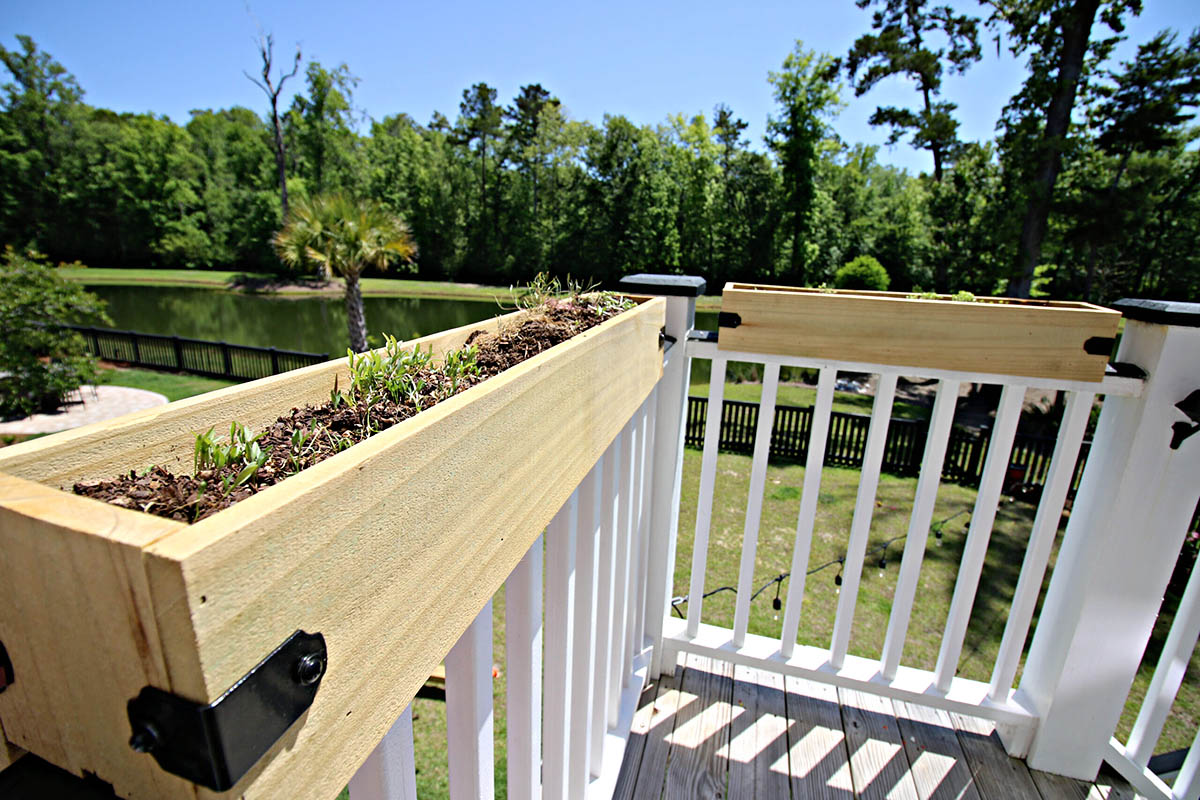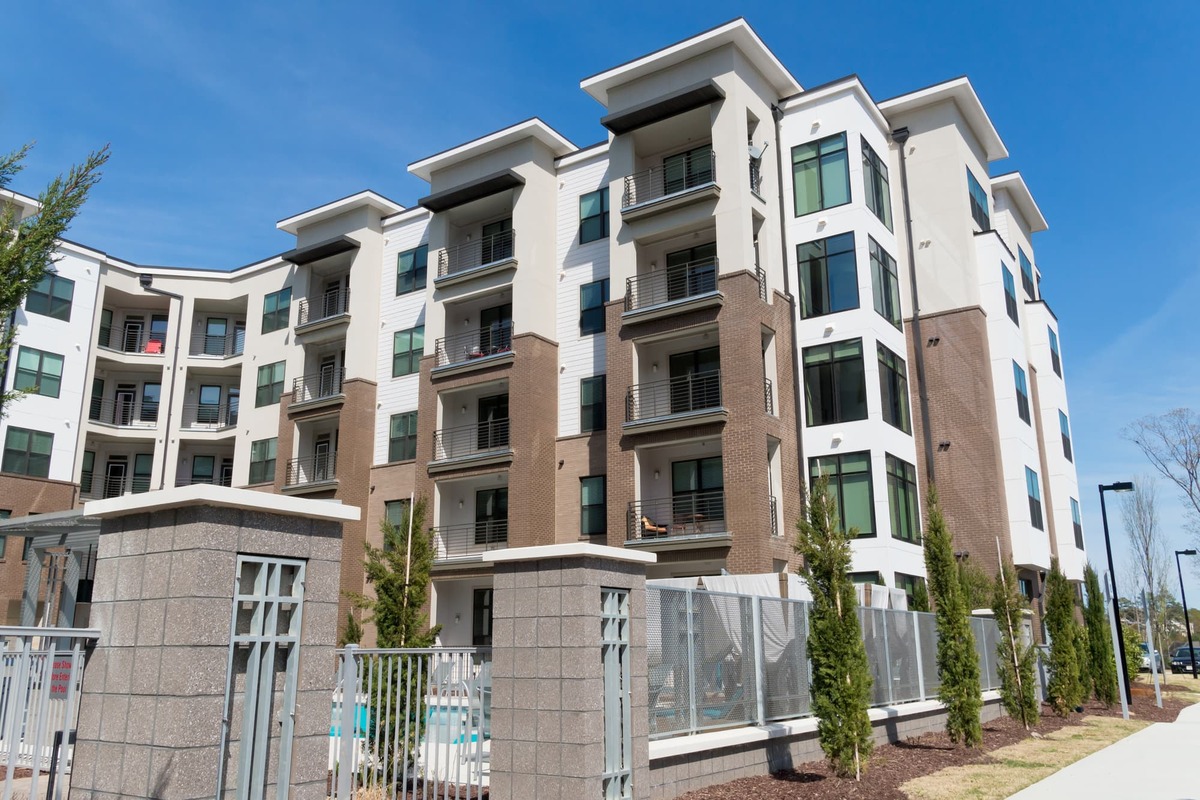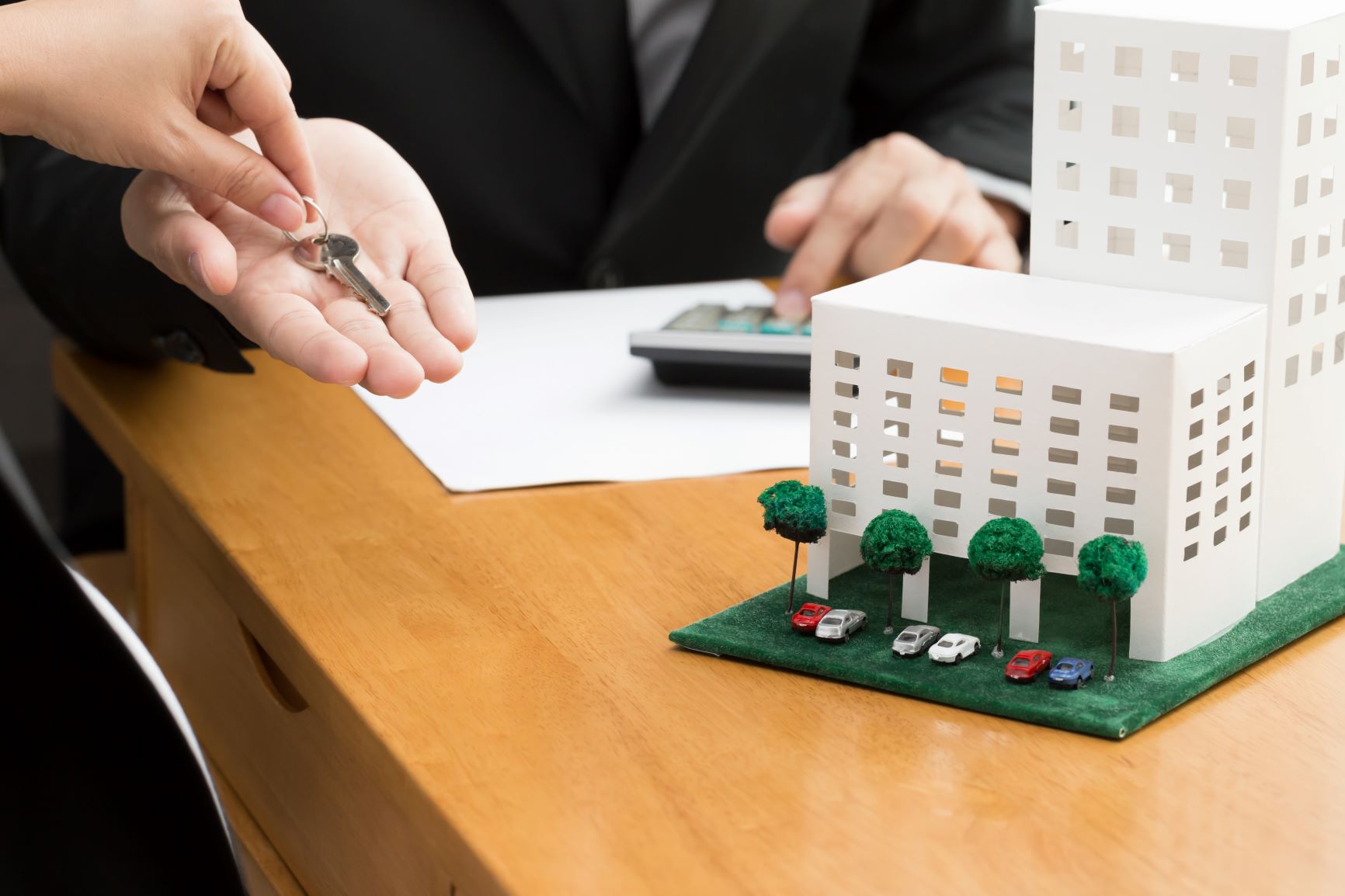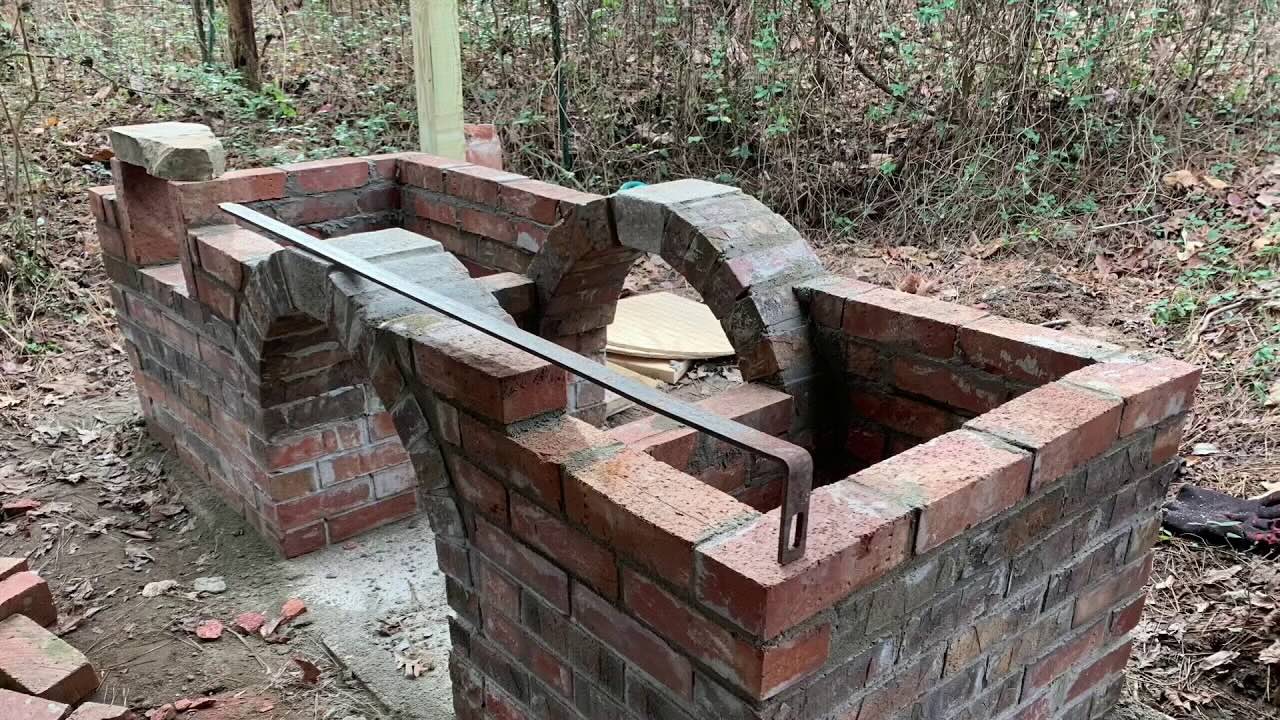Home>diy>Building & Construction>How To Buy A Building And Rent It Out


Building & Construction
How To Buy A Building And Rent It Out
Modified: January 6, 2024
Learn the step-by-step process of purchasing and renting out a building with our comprehensive guide on building construction. Maximize your investment potential today!
(Many of the links in this article redirect to a specific reviewed product. Your purchase of these products through affiliate links helps to generate commission for Storables.com, at no extra cost. Learn more)
Introduction
Investing in real estate has long been considered a lucrative financial opportunity. One popular strategy is to purchase a building and rent it out, generating a consistent stream of rental income. However, buying a building and successfully renting it out requires careful planning, research, and execution.
In this article, we will provide you with a comprehensive guide on how to buy a building and rent it out. We will cover everything from researching the real estate market to maintaining the property and dealing with tenant issues. By the end of this article, you will have a clear understanding of the steps involved in this process and be well-equipped to make informed decisions.
So, let's dive in and explore the fascinating world of buying and renting out buildings!
Researching the Real Estate Market
Before you start the process of buying a building, it is crucial to research and analyze the real estate market. This will give you insights into property prices, rental demand, and potential return on investment. Evaluate the market trends for both residential and commercial properties in the area you are interested in.
Take advantage of online resources, real estate websites, and local housing reports to gather information about the average rental yields and occupancy rates in the neighborhood. Look for areas where there is a strong demand for rental properties and where the rental market is growing steadily.
Financing Options for Buying a Building
Once you have done your market research, the next step is to explore financing options for buying the building. Unless you have enough cash reserves, you will likely need to secure a loan to finance your investment. The two primary options for financing are through a mortgage loan from a bank or through private financing.
When applying for a mortgage, you will need to provide the necessary documents, such as proof of income, credit history, and property appraisals. Private financing, on the other hand, involves borrowing money from individuals or companies who specialize in real estate lending. Research and compare the interest rates, terms, and conditions offered by different lenders to choose the best option for your situation.
Finding the Right Building
With financing in place, it is time to start the search for the perfect building. Consider factors such as location, property type (residential or commercial), size, and condition. Determine whether you want a newly constructed building or a fixer-upper that you can renovate and increase its value.
Engage with real estate agents, browse online listings, attend property auctions, and network with other investors to discover available properties. Take into account factors like proximity to amenities, transportation links, and potential for future growth in the neighborhood.
Conducting a Property Inspection
Before finalizing the purchase, it is essential to conduct a thorough property inspection. Hire a qualified inspector who will evaluate the physical condition of the building, including its electrical systems, plumbing, roof, and structural integrity. They will identify any existing or potential problems that may require costly repairs in the future.
Be present during the inspection and ask questions. Request a detailed inspection report with photographs and recommended repairs. Use this information to negotiate the purchase price or request repairs from the seller, if necessary.
Key Takeaways:
- Thorough research, careful planning, and understanding of legal and insurance requirements are crucial when buying a building and renting it out. Open communication and empathy are essential for successful property management.
- Effective advertising, proactive maintenance, and handling of tenant issues contribute to a positive landlord-tenant relationship. Proper financial management and compliance with laws are vital for long-term success.
Read more: How To Rent Out Your Basement
Researching the Real Estate Market
Before embarking on the journey of buying a building and renting it out, it is essential to thoroughly research the real estate market. This step will provide you with valuable insights into property prices, rental demand, and potential return on investment. By understanding the market trends, you can make informed decisions and maximize your rental income.
Here are some key steps to guide you in your research:
- Identify the Target Market: Start by narrowing down your focus to a specific location or area. Research the housing market in that particular city or neighborhood to determine the potential demand for rental properties. Look for areas where rental vacancies are low and rental prices are stable or increasing.
- Study Market Indicators: Look at market indicators such as average rental yields, occupancy rates, and market fluctuations. These indicators will give you a sense of how profitable and stable the rental market is in your target area. You can find this information through real estate websites, local housing reports, and by connecting with local real estate agents.
- Understand the Rental Laws: Familiarize yourself with the rental laws and regulations in your target market. Every jurisdiction has specific regulations regarding tenant rights, eviction procedures, and landlord obligations. Understanding these laws will help you avoid legal issues and make informed decisions when it comes to tenant screening, lease agreements, and property maintenance.
- Monitor Housing Demand: Stay updated on the housing demand in your target area. Look for factors such as population growth, job opportunities, and new developments that may impact the demand for rental properties. By identifying areas with high demand, you can ensure a consistent flow of potential tenants and maximize your rental income.
- Research Comparable Rental Listings: Explore the rental listings in your target market to get an idea of the average rental prices for properties similar to the one you plan to buy. This will help you determine the rental income you can expect to generate from your property. Take note of the amenities, location, and condition of the properties to assess how your rental property compares.
- Connect with Local Real Estate Professionals: Networking with local real estate agents, property managers, and industry professionals can provide valuable insights into the rental market. They can share their knowledge and experience, connect you with potential investment opportunities, and provide guidance on rental property management.
By thoroughly researching the real estate market, you will gain a deep understanding of the rental landscape in your target area. Armed with this knowledge, you will be better equipped to make strategic decisions that will lead to a successful investment and a profitable rental property.
Financing Options for Buying a Building
Once you have conducted thorough research on the real estate market and identified a suitable building to purchase, the next step is to explore financing options. Unless you have substantial cash reserves, you will likely need to secure a loan to fund the purchase of the building. Here are some financing options to consider:
- Mortgage Loans: The most common financing option for purchasing a building is through a mortgage loan from a bank or a financial institution. A mortgage allows you to borrow a large sum of money that is secured by the property you are buying. To qualify for a mortgage, you will need to provide proof of income, credit history, and a down payment. The terms and conditions of a mortgage, including interest rates and repayment period, can vary, so it’s important to shop around and compare offers from different lenders.
- Private Financing: Private financing is another option to consider, especially if you have difficulty qualifying for a traditional mortgage. Private financing involves borrowing money from individuals or companies that specialize in real estate lending. These lenders may have more flexibility in terms of eligibility criteria and loan terms. However, private financing often comes with higher interest rates and fees compared to traditional mortgages.
- Property Portfolio Loans: If you already own multiple properties or plan to invest in multiple buildings, a property portfolio loan may be a suitable option. This type of loan allows you to finance multiple properties under one loan, simplifying the borrowing process and potentially reducing closing costs.
- Real Estate Crowdfunding: In recent years, real estate crowdfunding platforms have emerged as an alternative financing option. These platforms allow you to invest in real estate projects by pooling funds with other investors. This can be an attractive option if you don’t have enough capital for a down payment or if you prefer a more diversified investment approach.
- Self-Directed IRAs: If you have a self-directed Individual Retirement Account (IRA), you may be able to use it to invest in real estate. With a self-directed IRA, you have more control over your investment choices and can potentially use your IRA funds to purchase a building. However, it’s important to consult with a financial advisor and understand the rules and regulations surrounding self-directed IRAs.
- Partnerships and Joint Ventures: Another financing option is to partner with other investors or enter into a joint venture. This can help spread the financial burden, diversify risk, and provide access to additional capital. However, it’s crucial to have a clear partnership agreement in place, outlining each party’s responsibilities and expectations.
When exploring financing options, consider factors such as interest rates, loan terms, repayment schedules, and eligibility criteria. It’s important to evaluate the financial implications and choose a financing option that aligns with your long-term goals and investment strategy.
Consulting with a mortgage broker or financial advisor who specializes in real estate investments can provide valuable guidance and help you navigate the complexities of securing financing for buying a building. Remember, thorough research and careful consideration of your financing options will help set a solid foundation for your real estate investment journey.
Finding the Right Building
Once you have determined your financing options, it’s time to embark on the exciting journey of finding the right building to purchase. Finding the perfect building for your investment requires careful consideration of various factors, including location, property type, size, and condition. Here are some key steps to help you in your search:
- Define Your Investment Goals: Before you start your search, it’s important to clearly define your investment goals. Are you looking for a residential property to rent out to families or a commercial property for businesses? Understanding your investment goals will help narrow down your search and focus on properties that align with your objectives.
- Location, Location, Location: The location of the building is a crucial factor that can significantly impact the success of your investment. Consider factors such as proximity to amenities like schools, shopping centers, parks, and public transportation. Additionally, evaluate the neighborhood’s growth potential and any planned infrastructure developments that may enhance the area’s desirability.
- Property Type: Decide whether you want to invest in a residential property or a commercial property. Residential properties cater to the housing needs of tenants, while commercial properties can vary from retail spaces to office buildings. Each property type has its own set of advantages and considerations, so choose the one that aligns with your investment goals and expertise.
- Size and Configuration: Consider the size and configuration of the building based on the type of tenants you aim to attract. For residential properties, the number of bedrooms and bathrooms, as well as the overall square footage, will determine its appeal to potential tenants. Commercial properties should have adequate space and layout suitable for the specific business needs of potential tenants.
- Condition of the Building: Assess the condition of the building and determine whether it requires any repairs or renovations. A building in good condition will likely attract more tenants and minimize maintenance costs. However, if you are open to investing in a property that needs some updating, you may be able to purchase it at a lower price and add value through renovations.
- Work with a Real Estate Agent: Enlist the services of a reputable real estate agent who specializes in the type of properties you are interested in. They have access to extensive property listings and can help you identify suitable options based on your criteria. A knowledgeable agent can guide you through the buying process, negotiate on your behalf, and provide valuable insights.
- Network with Other Investors: Networking with other real estate investors can provide insights and potential opportunities. Attend real estate investment seminars, join local real estate investor groups, and leverage social media platforms to connect with like-minded individuals. Sharing experiences and information can help you discover potential investment properties that may not be available on the open market.
Remember, finding the right building is crucial for your investment success. Take your time, conduct thorough research, and evaluate each potential property based on your investment goals and criteria. Patience and due diligence will help you identify a building that aligns with your investment strategy and has the potential to generate a steady stream of rental income.
Conducting a Property Inspection
Once you have found a building that meets your criteria, it is important to conduct a thorough property inspection before finalizing the purchase. A property inspection gives you a comprehensive understanding of the condition of the building, identifies any potential issues or repairs needed, and helps you make an informed decision. Here are the key steps to conducting a property inspection:
- Hire a Qualified Inspector: Start by hiring a qualified and experienced property inspector. Look for inspectors who specialize in buildings similar to the one you are purchasing, whether it’s a residential or commercial property. Ask for recommendations from real estate agents or other investors, and ensure that the inspector is licensed and insured.
- Be Present during the Inspection: It is advisable to be present during the property inspection. This allows you to ask questions, gain firsthand knowledge about the condition of the building, and discuss any concerns with the inspector. Walking through the property together provides an opportunity to learn more about its features and potential issues.
- Evaluate the Exterior: Begin the inspection by evaluating the exterior of the building. Look for signs of damage, such as cracks in the foundation, water stains, or rotting wood. Inspect the roof for any visible damage or leaks. Check the condition of windows, doors, and the landscaping surrounding the property. Assess the overall curb appeal of the building.
- Assess the Interior: Move inside and carefully assess the interior of the building. Check for any signs of water damage, mold, or pest infestations. Inspect the walls, ceilings, and floors for cracks, stains, or uneven surfaces. Test lights and switches to ensure they are in working order. Pay special attention to the plumbing and electrical systems, as well as the HVAC system, ensuring they are functioning properly.
- Look for Structural Issues: Examine the structural integrity of the building. Look for sagging ceilings, uneven floors, or cracks in the walls, as these could indicate potential structural issues. Inspect the foundation to check for any signs of settling or cracks. Structural problems can be costly to repair, so it’s important to identify them early on.
- Inspect Additional Areas: In addition to the main living or working areas, inspect other areas of the building, such as basements, attics, or storage spaces. Check for proper insulation and ventilation. Look for signs of water intrusion, such as musty smells or water stains.
- Request a Detailed Inspection Report: At the end of the property inspection, request a detailed inspection report from the inspector. The report should include findings, photographs, and recommendations for repairs or further assessments. Review the report carefully and discuss any concerns with the inspector.
- Negotiate or Request Repairs: If the property inspection reveals significant issues or repairs that need to be addressed, you can use this information to negotiate the purchase price or request repairs from the seller. Work with your real estate agent or attorney to navigate this process effectively, keeping in mind your budget and investment goals.
A thorough property inspection provides you with peace of mind and helps you make an informed decision about purchasing the building. It allows you to identify potential issues, estimate repair costs, and ensure that the property is in good condition. Remember, a little bit of extra time and effort spent on conducting a comprehensive property inspection can save you from costly surprises down the road.
Calculating Potential Rental Income
When buying a building with the intention of renting it out, one of the most important factors to consider is the potential rental income it can generate. Calculating the potential rental income accurately will help you determine the profitability of your investment and set the right rental price. Here are the key steps to calculating potential rental income:
- Research Comparable Rental Listings: Start by researching comparable rental listings in the area where your building is located. Look for properties that are similar in type, size, and condition to the one you are planning to rent out. Pay attention to their advertised rental prices.
- Determine the Average Rental Price: Based on the comparable rental listings, calculate the average rental price for properties similar to yours. Take into account factors such as location, amenities, and condition of the property. This will give you a benchmark to work with when setting your rental price.
- Consider Market Demand: Evaluate the rental demand in the area. Are there many tenants seeking rental properties? Are there any specific factors in the neighborhood that attract tenants, such as proximity to schools, transportation, or employment centers? Understanding the market demand will help you gauge whether you can potentially charge a premium rental price.
- Evaluate Property Features: Assess the unique features and amenities of your building. Does it have any unique selling points that differentiate it from other rental properties? Features such as a renovated kitchen, in-unit laundry, or parking space can justify charging a higher rental price.
- Consider Expenses: Take into account the expenses associated with owning and renting out the building. This includes property taxes, insurance, mortgage payments (if applicable), maintenance costs, any property management fees, and vacancy allowance. Deduct these expenses from the potential rental income to get a more accurate picture of your net rental income.
- Estimate Occupancy Rate: It’s important to consider the occupancy rate when calculating potential rental income. A 100% occupancy rate is unlikely, so it’s prudent to estimate a realistic occupancy rate based on the local rental market. A common rule of thumb is to assume around 90% occupancy to account for potential vacancies.
- Account for Rental Market Trends: Keep in mind that rental market trends can fluctuate over time. Factors such as changes in supply and demand, economic conditions, and housing market dynamics can impact rental prices. Stay updated on market trends and adjust your rental price accordingly to remain competitive in the market.
By considering all of these factors, you can get a clearer idea of the potential rental income your building can generate. It’s important to strike a balance between setting a reasonable rental price that attracts tenants and covers your expenses, while maximizing your return on investment. Consulting with a real estate agent or property management professional can also provide guidance in determining the appropriate rental price for your building.
Remember that calculating potential rental income is not a one-time process. It’s essential to reassess and adjust your rental price periodically to stay competitive in the rental market and maximize your rental income.
Setting the Right Rental Price
Setting the right rental price is crucial when leasing out your building. A well-priced rental property attracts tenants and ensures a steady stream of income. However, setting the rental price too high may result in prolonged vacancies, while setting it too low could lead to missed income opportunities. Here are the key factors to consider when determining the right rental price:
- Research Comparable Rental Listings: Begin by researching comparable rental listings in your area. Look for properties similar in size, location, and condition to your building. Pay attention to their advertised rental prices and compare them to get a sense of the market rate.
- Evaluate Your Property’s Features and Amenities: Consider the unique features and amenities of your building that set it apart from others. Does it offer updated appliances, a backyard, or assigned parking? These features can warrant a higher rental price. Conversely, if your building lacks certain amenities or is in need of repair, you may need to adjust the price accordingly.
- Consider Location: Location plays a significant role in setting the rental price. Properties in desirable neighborhoods with access to amenities like schools, shopping centers, and public transportation often command higher rental prices. Evaluate the neighborhood’s desirability and take into account factors like safety, proximity to employment centers, and the overall quality of life in the area.
- Assess the Rental Market Demand and Supply: Understanding the rental market demand and supply in your area is crucial. Determine the current demand for rental properties and evaluate the available supply. If the market is highly competitive with a high demand and limited supply, you may have more flexibility to set a higher rental price.
- Analyze Expenses and Desired Return on Investment: Take into account your expenses, including mortgage payments (if applicable), property taxes, insurance, maintenance costs, and potential property management fees. Consider the return on investment you desire and ensure the rental income covers your expenses while providing a reasonable return.
- Factor in Vacancy Allowance: It’s important to account for potential vacancies when setting the rental price. A conservative approach is to assume 90% occupancy, allowing for some vacancy throughout the year. Adjust your rental price accordingly to ensure that you are adequately prepared to cover expenses during periods of vacancy.
- Seek Professional Advice: Consulting with a real estate agent, property manager, or rental market specialist can provide valuable insights and guidance. They have in-depth knowledge of the local rental market and can help you assess factors specific to your area, such as rental regulations and recent market trends.
Ultimately, finding the right rental price is a delicate balance between attracting tenants and maximizing your rental income. Overpricing can lead to extended vacancies, while underpricing may result in missed income opportunities. Regularly monitor the local rental market and adjust your rental price accordingly to remain competitive and maximize your return on investment.
Remember that the rental market is dynamic, and it’s essential to stay updated on market trends, economic changes, and shifts in demand and supply. By staying informed and adopting a flexible approach, you can set the right rental price and ensure the success of your rental property.
Advertising the Rental Property
Once you have determined the right rental price for your building, it’s time to create an effective advertising strategy to attract potential tenants. Your goal is to reach the right audience, highlight the unique features of your property, and generate interest. Here are some key steps to consider when advertising your rental property:
- Write an Engaging Listing Description: Start by creating a compelling listing description that showcases the best features of your building. Highlight key details such as the number of bedrooms and bathrooms, square footage, and any special amenities. Be descriptive, but keep the description concise and easy to read.
- Take High-Quality Photos: Good quality photos are essential to attract potential tenants. Use a high-resolution camera or hire a professional photographer to capture clear and appealing images of the building’s interior and exterior. Showcase the best features of each room and ensure that the photos accurately represent the property.
- Utilize Online Listing Platforms: Take advantage of online listing platforms, such as real estate websites and rental listing websites, to promote your property. Create a detailed listing with the description, photos, and contact information. Be sure to optimize your listing with appropriate keywords to improve its visibility in search results.
- Consider Social Media Advertising: Harness the power of social media platforms to reach a wider audience. Create visually appealing posts about your rental property and share them on platforms like Facebook, Instagram, and Twitter. Utilize relevant hashtags to increase reach and engagement with potential tenants.
- Display Eye-Catching Signage: Place a “For Rent” sign in front of the building to attract the attention of passersby. Ensure that the signage is clear, well-designed, and includes contact information. This can be an effective way to target local individuals who may be looking for rental properties in the area.
- Network with Local Real Estate Professionals: Connect with local real estate agents, property managers, and other industry professionals. They may have clients or contacts who are searching for rental properties. Tap into their network by offering referral incentives or by simply informing them about your property.
- Host Open Houses or Virtual Tours: Consider hosting open houses or virtual tours to give potential tenants an opportunity to view the property. Schedule specific times for interested individuals to visit the building or create virtual tours using video or 3D technology. This allows prospective tenants to view the property from the comfort of their own homes.
- Screen and Respond to Inquiries Promptly: Respond to inquiries and schedule property viewings promptly. This shows professionalism and increases the chances of attracting qualified tenants. Implement a screening process to assess prospective tenants based on their rental history, employment status, and creditworthiness.
- Highlight Unique Selling Points: Emphasize the unique selling points of your rental property. Whether it’s a spacious backyard, a newly renovated kitchen, or a convenient location, make sure to showcase these features in your advertising. Differentiating your property can help it stand out among the competition.
Remember, effective advertising is key to attracting the right tenants and minimizing vacancy periods for your building. Utilize various advertising avenues, highlight the unique aspects of your rental property, and promptly respond to inquiries to increase the chances of finding suitable tenants who will appreciate and care for your property.
Adapt your advertising strategy based on market conditions and tenant preferences. Stay updated on rental market trends, engage with potential tenants, and continually assess and refine your advertising approach to maximize your rental property’s exposure and ultimately secure qualified and reliable tenants.
When buying a building to rent out, consider the location carefully. Look for areas with high demand for rental properties, good amenities, and low vacancy rates to maximize your investment potential.
Screening and Selecting Tenants
When renting out your building, it is crucial to screen and select tenants carefully to ensure a positive rental experience and protect your investment. Implementing a thorough screening process helps you identify reliable tenants who are likely to pay rent on time, take good care of the property, and abide by the terms of the lease. Here are the key steps to effectively screen and select tenants:
- Establish Screening Criteria: Start by defining your screening criteria. These criteria can include factors such as a minimum income requirement, a positive rental history, a good credit score, and a stable employment history. Clearly communicate these criteria in your rental listing to attract tenants who meet your requirements.
- Require a Rental Application: Have potential tenants complete a rental application that collects essential information such as their full name, contact details, employment history, references, and previous rental history. The application should also include consent for a background and credit check.
- Perform Background and Credit Checks: Conduct thorough background and credit checks on all applicants. This involves verifying employment history, contacting previous landlords for rental references, and obtaining a credit report. Look for any red flags such as a history of eviction, outstanding debts, or a low credit score.
- Contact References: Reach out to the references provided by applicants, including previous landlords and personal references. Ask relevant questions to gain insights into their rental behavior, such as whether they paid rent on time, took care of the property, and followed the lease agreement.
- Interview Potential Tenants: Schedule an in-person or virtual interview with prospective tenants. This allows you to assess their personalities, ask clarifying questions, and gauge their compatibility with your rental property. Ask about their reasons for moving, their future plans, and any concerns or questions they may have about the rental.
- Consider Rental History and Eviction Records: Examine the rental history of applicants to determine if they have a track record of meeting their financial obligations and following lease agreements. Check for any past evictions, late rent payments, or lease violations that may indicate potential problems in the future.
- Evaluate Financial Stability: Assess the financial stability of potential tenants by reviewing their income, employment history, and creditworthiness. Consider their income level in relation to the monthly rent to ensure they can comfortably afford the payments. Look for a stable employment history to gauge their ability to hold a job and consistently pay rent.
- Follow Fair Housing Laws: Familiarize yourself with fair housing laws to ensure that your tenant selection process is non-discriminatory and in compliance with the law. Avoid discriminatory practices based on factors such as race, color, religion, sex, national origin, familial status, or disability.
- Make the Final Decision: After completing the screening process, carefully evaluate all the gathered information and consider the overall suitability of each applicant. Select the tenant who best meets your screening criteria and appears to be responsible, reliable, and a good fit for your rental property.
Always communicate your decision promptly and professionally to all applicants. Be transparent about the selection process and provide clear reasons for your decision, particularly if applicants are not selected. Keep all documentation and information collected during the screening process in case you need to refer back to it in the future.
Remember, the tenant screening process is crucial for the success of your rental property. Taking the time to thoroughly screen and select tenants can help minimize potential issues and ensure a positive rental experience for both parties involved.
Read more: Where Can I Rent A Building For A Party
Negotiating Lease Agreements
When renting out your building, negotiating a well-crafted lease agreement is essential to protect your rights as a landlord and establish clear expectations for both parties. A lease agreement serves as a legally binding document that outlines the terms and conditions of the tenancy. Here are the key steps to effectively negotiate lease agreements:
- Start with a Standard Lease Template: Begin by using a standard lease template that covers the basic terms and conditions of a rental agreement. You can find templates online or consult with a real estate attorney to create a customized lease agreement that complies with local laws and regulations.
- Specify Rental Terms: Clearly outline the rental terms, including the length of the lease, the amount of rent, the due date for rent payments, and any penalties for late payments. It’s important to be specific about what is included in the rent, such as utilities or parking fees, as well as any restrictions or limitations on the use of the property.
- Define Security Deposit: Clearly state the amount of the security deposit, the conditions for its return, and any deductions that may be made. Include details about the acceptable use of the security deposit, such as covering unpaid rent or repairs for damages beyond normal wear and tear.
- Specify Maintenance and Repairs: Clearly define the responsibilities of both the landlord and the tenant regarding maintenance and repairs. Specify who is responsible for routine maintenance tasks and repairs, and outline the process for reporting and addressing maintenance issues. Include clauses regarding the importance of notifying the landlord in a timely manner about any repairs needed.
- Consider Pet and Smoking Policies: If you have specific policies regarding pets or smoking, clearly state them in the lease agreement. Specify whether pets are allowed, any restrictions on breed or size, and if there are any additional pet-related fees. Also, specify whether smoking is allowed or prohibited in the rental property.
- Include Renewal and Termination Clauses: Include clauses that address the renewal and termination of the lease. Specify the notice period required for terminating the lease, both by the landlord and the tenant. Also, outline the process for lease renewal and any changes in rent or terms that may occur upon renewal.
- Review Laws and Regulations: Stay informed about local laws and regulations that may affect your lease agreement. Familiarize yourself with tenant rights, fair housing laws, and any specific requirements or restrictions related to rental properties in your jurisdiction. Ensure that your lease agreement complies with all applicable laws.
- Seek Professional Advice: Consider consulting with a real estate attorney or property management professional to review your lease agreement. They can provide guidance, ensure legal compliance, and help you address any specific concerns or requirements related to your rental property.
- Communicate Clearly: During the negotiation process, communicate clearly with the prospective tenant. Be open to discussions and address any questions or concerns they may have. Flexibility and proactive communication can help build a positive landlord-tenant relationship from the beginning.
Remember, negotiating lease agreements requires attention to detail and consideration of both the landlord’s and tenant’s rights and obligations. Strive for a fair and balanced agreement that protects your interests while being reasonable and respectful towards the tenant. A well-negotiated lease agreement sets the foundation for a smooth and successful tenancy.
Before finalizing the lease agreement, ensure that all parties thoroughly review and understand its terms. Encourage the tenant to seek independent legal advice if desired. Once both parties are in agreement, sign the lease agreement and provide each party with a copy for their records.
Maintaining the Rental Property
Maintaining the rental property is vital for preserving its value, attracting and retaining tenants, and ensuring a positive rental experience for both parties. As a landlord, it’s your responsibility to keep the property in good condition and promptly address any maintenance issues. Here are the key steps to effectively maintain the rental property:
- Create a Maintenance Schedule: Establish a regular maintenance schedule to ensure the property is well-maintained throughout the year. This schedule should include routine tasks such as landscaping, cleaning common areas, inspecting the property for damages, and changing air filters. Adhering to a maintenance schedule helps prevent potential problems and ensures the longevity of the property.
- Address Repairs Promptly: Respond to repair requests from tenants promptly and address any maintenance issues in a timely manner. Regularly communicate with tenants and encourage them to report any problems or damages that need attention. Promptly attending to repairs not only keeps your tenants happy but also helps prevent minor issues from escalating into major and costly problems.
- Hire Qualified Contractors: When hiring contractors for repairs and maintenance tasks that you cannot handle yourself, ensure they are qualified, licensed, and insured. Thoroughly vet contractors, check references, and obtain multiple quotes for larger projects. Regularly evaluate the performance of your contractors to ensure they are providing quality work at a fair price.
- Perform Regular Inspections: Conduct periodic inspections of the rental property to identify any maintenance or safety concerns. Inspections allow you to detect potential issues early on, such as leaks, electrical problems, or pest infestations. Communicate with your tenants in advance to schedule inspections and address any concerns they may have.
- Keep the Property Clean and Presentable: Maintain cleanliness and tidiness in common areas and shared spaces, such as hallways, lobbies, and laundry rooms. Regularly clean and maintain any outdoor spaces associated with the rental property, such as gardens or parking lots. A well-maintained property enhances its curb appeal and attracts quality tenants.
- Monitor Safety Measures: Regularly inspect and maintain safety measures within the rental property, such as smoke detectors, fire extinguishers, and security systems. Ensure that all safety equipment is functioning properly and meets legal requirements. Fulfill your obligations as a landlord to provide a safe living or working environment for your tenants.
- Communicate with Tenants: Maintain open and clear communication with your tenants regarding maintenance activities. Provide them with information about upcoming repairs or inspections and ensure they are aware of how to report maintenance issues. Promptly respond to their inquiries and address their concerns to foster a positive landlord-tenant relationship.
- Keep Records: Maintain detailed records of all rental property maintenance activities, including repairs, inspections, and communication with tenants. Document all expenses related to maintenance and keep copies of contractors’ invoices and receipts. This record-keeping is crucial for financial management, tax purposes, and potential future disputes.
- Stay Up-to-Date with Regulations: Stay informed about local laws and regulations related to rental property maintenance. Familiarize yourself with your obligations as a landlord, such as providing habitable living conditions, adhering to health and safety codes, and addressing repairs within a reasonable timeframe. Stay updated on any changes in regulations that may impact your maintenance responsibilities.
Remember, proactive maintenance and timely repairs contribute to tenant satisfaction and help preserve the value of your rental property. By prioritizing property maintenance, you create an attractive living or working environment, reduce vacancies, and ensure a positive rental experience for your tenants. Regular maintenance not only benefits your tenants but also protects your investment and minimizes potential issues down the line.
Developing a comprehensive maintenance plan and staying proactive in monitoring the condition of the property will contribute to the long-term success of your rental property.
Dealing with Tenant Issues
As a landlord, it’s important to be prepared to handle tenant issues effectively and efficiently. Addressing tenant concerns promptly and maintaining a positive landlord-tenant relationship is key to a successful rental property management. Here are the key steps to effectively deal with tenant issues:
- Establish Open Communication: Encourage open and clear communication with your tenants from the beginning of the tenancy. Create channels for tenants to report issues or concerns, such as a designated email address or a maintenance request system. Respond to their inquiries and requests promptly to demonstrate your commitment to addressing their concerns.
- Listen and Show Empathy: When tenants bring up issues or concerns, listen attentively and show empathy. Make them feel heard and understood. Empathy can go a long way in diffusing tense situations and building a positive rapport with tenants. Treat each tenant with respect and strive to resolve their issues fairly.
- Document Tenant Complaints: Keep a record of all tenant complaints and issues, along with your actions taken to address them. Maintain clear and organized documentation, including dates, descriptions of the issues raised, and any resolutions or actions taken. This documentation can be invaluable if disputes or legal matters arise in the future.
- Address Maintenance and Repair Requests Promptly: Respond to maintenance and repair requests promptly and resolve them within a reasonable timeframe. Inform your tenants of the steps being taken to address their concerns and provide updates as necessary. Regularly communicate with tenants to ensure they are aware of the progress being made.
- Mediate Disputes: In cases of conflicts or disputes between tenants or between a tenant and yourself, act as a mediator to find fair resolutions. Encourage open dialogue between parties involved and take steps to address their concerns or misunderstandings. Strive for amicable resolutions that are beneficial for all parties.
- Follow Legal Procedures: Familiarize yourself with tenant rights and local laws governing rental properties. Ensure you comply with all legal procedures when addressing tenant issues, including proper eviction processes if necessary. Consulting with a real estate attorney can help you navigate any legal complexities and ensure you are acting within the bounds of the law.
- Provide Proper Notice: If you need to enter the rental property for inspections or repairs, provide tenants with proper notice as required by local laws. Respect their privacy and ensure you adhere to the regulations regarding notice periods and entry requirements. This shows respect for your tenants and helps maintain a positive landlord-tenant relationship.
- Document Lease Violations: If a tenant violates the terms of the lease agreement, document the violations and take appropriate action. Issue written warnings or notices, following proper legal procedures as required by local laws. Keep a record of these actions, as they may be necessary if further action, such as eviction, becomes necessary.
- Stay Professional: While dealing with tenant issues, it’s crucial to remain professional and maintain a calm demeanor. Avoid engaging in heated arguments or displaying unprofessional behavior. Approach all interactions with professionalism and focus on finding mutually beneficial solutions.
Dealing with tenant issues requires effective communication, empathy, and adhering to legal requirements. Promptly addressing concerns, mediating disputes, and maintaining thorough documentation are essential for successful resolution. By demonstrating respect for your tenants and proactively handling issues, you can foster a positive relationship and create a harmonious living or working environment.
Remember, each tenant issue is an opportunity to improve your property management skills and strengthen your relationship with tenants. By addressing issues promptly and professionally, you contribute to a positive and mutually beneficial experience for all parties involved.
Handling Rental Income and Expenses
Properly handling rental income and expenses is crucial for effective property management and financial success as a landlord. Managing rental income and expenses requires careful organization, accurate record-keeping, and adherence to legal and financial responsibilities. Here are the key steps to effectively handle rental income and expenses:
- Establish Separate Bank Accounts: Set up separate bank accounts for rental income and expenses. This ensures clear separation between personal and rental funds, making bookkeeping and financial management much easier to handle.
- Keep Detailed Records: Maintain thorough and organized records of all rental income and expenses. Keep copies of rent receipts, invoices, and any relevant financial documents. Accurate record-keeping ensures transparency, simplifies tax preparation, and provides a clear overview of your rental property’s financial status.
- Document Rental Income: Maintain a systematic procedure for documenting and collecting rent payments. Issue receipts or use an online payment system to track and record all rental income received. Make sure to include the date of payment, the tenant’s name, and the amount received on each receipt or in your online records.
- Track and Categorize Expenses: Monitor and categorize all rental property-related expenses. This includes mortgage or loan payments, property taxes, insurance premiums, repairs and maintenance costs, and any professional fees. Utilize accounting software or spreadsheets to ensure accurate tracking and categorization.
- Monitor Rental Cash Flow: Regularly evaluate your rental property’s cash flow by comparing rental income to expenses. Analyze the profitability of your investment and identify areas where adjustments may be needed. This helps you assess the financial health of your rental property and make informed decisions based on the numbers.
- Create a Budget: Develop a budget that outlines expected income and projected expenses for your rental property. Account for recurring expenses, as well as potential vacancies or major repairs. A budget helps you anticipate costs and plan your finances accordingly.
- Prioritize Timely Payments: Ensure you make all required payments promptly and on time. This includes mortgage or loan payments, property taxes, insurance premiums, and any other expenses associated with the rental property. Late payments can result in penalties, damage your credit, and negatively affect your landlord-tenant relationship.
- Prepare for Tax Obligations: Familiarize yourself with the tax obligations related to rental income in your jurisdiction. Be aware of applicable deductions you may be eligible for, such as depreciation, repairs, or professional fees. Consult with a tax professional to ensure compliance and optimize your tax strategy.
- Consult with Professionals: Seek advice from financial professionals, such as accountants or property management experts, to ensure you are handling income and expenses correctly. They can provide guidance on financial management, tax planning, and long-term wealth-building strategies related to your rental property.
- Regularly Review and Adjust Finances: Regularly review your rental property’s financial performance and make necessary adjustments as needed. Analyze income and expense trends, evaluate the effectiveness of cost-saving measures, and adjust your budget and financial plans accordingly.
By effectively handling rental income and expenses, you can maintain financial stability and maximize the profitability of your rental property. Accurate record-keeping, timely payments, budgeting, and seeking professional advice contribute to a well-managed and successful rental business.
Remember, careful financial management is essential for long-term success as a landlord. By staying organized, informed, and proactive in monitoring your rental property’s finances, you can ensure a smooth and profitable operation.
Read more: How To Build A House Out Of A Metal Building
Understanding Legal and Insurance Requirements
As a landlord, it is important to have a clear understanding of the legal and insurance requirements associated with owning and renting out a property. Adhering to these requirements helps protect your investment, ensures compliance with local regulations, and prevents potential legal issues. Here are key considerations regarding legal and insurance requirements:
- Familiarize Yourself with Landlord-Tenant Laws: Thoroughly research and familiarize yourself with the landlord-tenant laws and regulations in your jurisdiction. Understand the rights and responsibilities of both landlords and tenants, including laws related to eviction procedures, security deposits, habitability standards, and fair housing laws. Compliance with these laws is essential for a successful and legal rental business.
- Create a Comprehensive Lease Agreement: Develop a comprehensive lease agreement that outlines the terms and conditions of the tenancy. Ensure your lease agreement covers important aspects such as rental payment terms, security deposit details, maintenance responsibilities, pet policies, and termination procedures. Consult with a real estate attorney to draft a lease agreement that complies with local laws and protects your interests.
- Obtain Adequate Insurance Coverage: As a landlord, it is essential to have appropriate insurance coverage to protect your rental property from potential risks. Consider getting landlord insurance that covers property damage, liability protection, and loss of rental income. Consult with an insurance professional to determine the specific coverage needed for your property.
- Maintain Proper Documentation: Keep thorough and organized records of all rental-related documents, including the lease agreement, rent receipts, repair records, correspondence with tenants, and relevant legal notices. Proper documentation is vital in the event of disputes or legal issues.
- Ensure Proper Property Maintenance: Comply with all health and safety regulations by maintaining the rental property in a safe and habitable condition. Regularly inspect the property, address maintenance issues promptly, and ensure compliance with all local building codes and safety standards.
- Protect Tenant Privacy: Respect tenant privacy rights by providing proper notice before entering the rental property. Familiarize yourself with local laws regarding notice requirements for routine inspections, repairs, or other necessary access to the property.
- Screen Tenants Fairly and Equally: Adhere to fair housing laws and ensure that your tenant screening process is consistent, unbiased, and does not discriminate against individuals based on factors such as race, color, religion, sex, national origin, familial status, or disability. Screen all prospective tenants based on consistent criteria and treat each applicant fairly.
- Stay Updated on Legal Changes: Keep yourself informed about any changes in local laws and regulations. Attend landlord-tenant workshops, participate in industry forums, and stay connected with real estate associations to stay updated on legal changes that may impact your rental property.
- Consult with Legal and Real Estate Professionals: When in doubt, consult with a real estate attorney or legal professional specializing in landlord-tenant law. Seek their guidance on legal matters, lease agreements, eviction procedures, and any other concerns related to your rental property.
Complying with legal and insurance requirements is crucial to protect your investment, maintain a positive landlord-tenant relationship, and operate your rental property legally and ethically. By understanding and adhering to these requirements, you can minimize risks, prevent potential legal issues, and ensure a smooth and successful rental property business.
Remember, the laws and requirements can vary depending on your jurisdiction, so it’s important to conduct thorough research and seek professional advice applicable to your specific location and situation. Compliance with legal and insurance requirements is an ongoing responsibility, and staying informed and proactive is essential for long-term success as a landlord.
Conclusion
Congratulations! You have now gained a comprehensive understanding of the steps involved in buying a building and renting it out. From researching the real estate market to understanding legal and insurance requirements, you have equipped yourself with the knowledge and tools necessary to embark on this rewarding investment journey.
Remember, thorough research and careful planning are key when selecting the right building, financing the purchase, and setting the rental price. Conducting property inspections, calculating potential rental income, and advertising effectively are crucial in attracting and selecting reliable tenants.
As a landlord, your responsibilities extend to maintaining the property, addressing tenant issues diligently, and managing rental income and expenses responsibly. Understanding legal requirements and ensuring proper insurance coverage is essential for protecting your investment and complying with regulations.
While the road to successful property management may present challenges, maintaining open communication, operating with empathy, and staying up-to-date with industry trends and legal changes will help you navigate the rental market effectively.
Lastly, consider consulting with professionals, such as real estate agents, property managers, attorneys, and financial advisors, to provide guidance and expertise throughout the process. They can offer valuable insights, help you make informed decisions, and ensure compliance with local laws and best practices.
Remember that investing in real estate is not only a financial endeavor but also an opportunity to provide a safe and comfortable living or working space for tenants. By being proactive, attentive, and knowledgeable, you can create a positive rental experience for your tenants while enjoying the financial rewards that come with successful property management.
Good luck as you embark on this rewarding journey of buying a building and renting it out!
Frequently Asked Questions about How To Buy A Building And Rent It Out
Was this page helpful?
At Storables.com, we guarantee accurate and reliable information. Our content, validated by Expert Board Contributors, is crafted following stringent Editorial Policies. We're committed to providing you with well-researched, expert-backed insights for all your informational needs.













0 thoughts on “How To Buy A Building And Rent It Out”